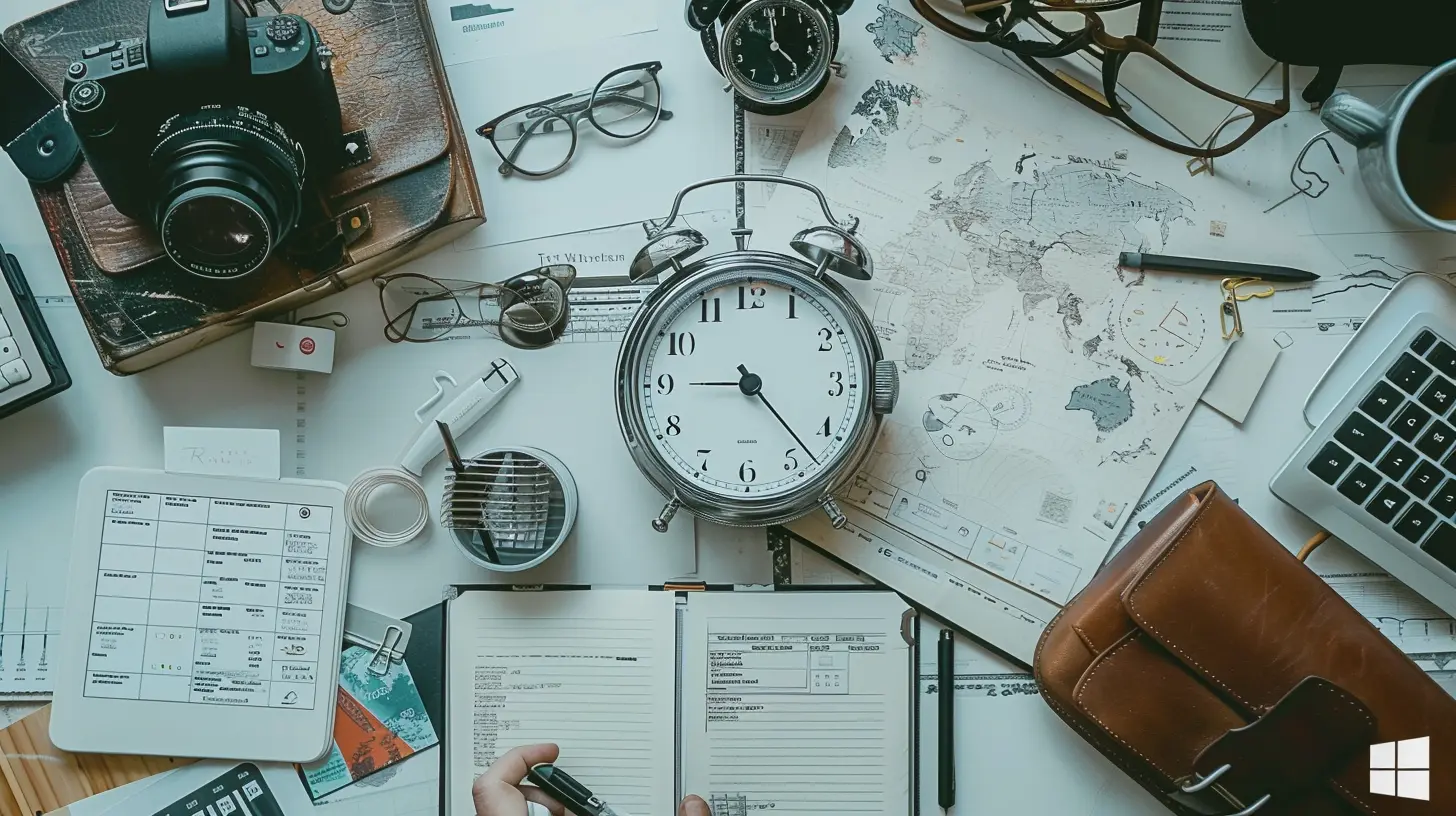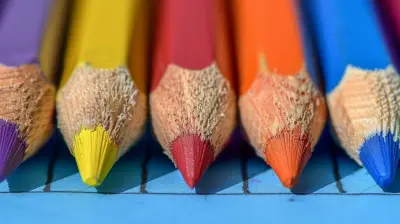How to Create a Study Environment that Maximizes Time
20 May 2025
Studying can sometimes feel like an uphill battle—especially when distractions are everywhere. Have you ever sat down, ready to dive into your books, only to find yourself checking your phone, staring out the window, or suddenly remembering you need a snack? You’re not alone.
A well-designed study environment can be the key to unlocking your focus and productivity. But how do you set up a space that actually helps you retain information and manage your time effectively? Let’s break it down and create a study space that works for you.

Why Your Study Environment Matters
Think of your study space like a gym for your brain. You wouldn’t work out in a cluttered room with loud distractions, right? The same goes for studying. The right environment helps you:- Stay focused for longer periods
- Reduce stress and anxiety
- Improve information retention
- Make the most of your study sessions
Now, let’s dive into how to create a study-friendly space that helps you maximize your time. 
1. Choose the Right Location
Quiet vs. Background Noise
Do you focus best in total silence, or does a little background noise help? Some people thrive in complete quiet, while others prefer soft background music or ambient sounds. Experiment with different settings to find out what works best for you.- If you need silence, libraries or study rooms might be ideal.
- If you prefer background noise, try a coffee shop or play instrumental music while studying.
Comfort vs. Productivity
Your bed might seem like a great place to study—but it’s also a great place to nap! Choose a spot where you can sit comfortably but still stay alert. A desk and chair setup is usually a good bet.
2. Keep Your Study Space Organized
A cluttered space leads to a cluttered mind. Imagine trying to study with papers everywhere, random distractions, and a messy desk. Sounds frustrating, right?Declutter Regularly
Keep only the essentials on your desk—laptop, notebooks, pens, and a water bottle. Anything else is just a distraction waiting to happen.Use Storage Solutions
If you have a lot of study materials, use shelves, drawers, or file organizers to keep things neat.Go Digital Where Possible
Instead of stacks of paper, consider using apps like Evernote, Google Docs, or Notion to keep your notes organized.
3. Optimize Your Lighting
Light plays a huge role in how productive you feel. Ever tried reading in dim lighting? Not fun.Natural Light is Best
If possible, set up near a window. Natural light reduces eye strain and boosts your mood.Use Artificial Light Wisely
If you’re studying at night, use a bright desk lamp to avoid straining your eyes. Warm, soft lighting can help you stay focused without making you feel sleepy.4. Minimize Distractions
Let’s be real—distractions are everywhere. The key is to control them as much as possible.Turn Off Notifications
Your phone is probably your biggest distraction. Try putting it on Do Not Disturb mode or placing it in another room. If you need your phone for studying, use apps like Forest or StayFocusd to block distractions.Set Boundaries
If you live with roommates or family members, let them know when you’re studying so they won’t interrupt you. A simple “Hey, I’m studying from 3-5 PM—please don’t disturb me” can go a long way.Use Focus Tools
Try noise-canceling headphones or white noise apps to block out background sounds. Websites like Noisli or Coffitivity can also help.5. Manage Your Time Wisely
Even the best study space won’t help if you don’t manage your time effectively.Use the Pomodoro Technique
This method helps you stay focused while avoiding burnout:1. Study for 25 minutes
2. Take a 5-minute break
3. Repeat this cycle 4 times
4. Take a longer 15-30 minute break
This technique keeps your brain fresh and prevents mental fatigue.
Prioritize Tasks
Make a to-do list before you start studying. Rank tasks based on difficulty and urgency. Knock out the hardest tasks first while your mind is fresh.Set a Study Schedule
Create a routine. If you study at the same time every day, your brain will start to expect it, making it easier to get into the zone.6. Make Your Study Space Comfortable, But Not Too Cozy
Comfort is important, but too much coziness can lead to laziness (or unexpected naps).Choose the Right Chair
A good chair makes a difference. If you’re studying for long hours, invest in an ergonomic chair to support your posture.Keep the Temperature Just Right
Too hot? You’ll feel sleepy. Too cold? You’ll be too uncomfortable to focus. Aim for a moderate temperature where you feel comfortable but alert.Add Motivational Elements
A vision board, a few inspiring quotes, or a checklist of your study goals can help keep you motivated.7. Use the Right Tools and Technology
The right tools can make studying easier and more efficient.Apps for Focus and Productivity
- Evernote/Notion – Keep your notes organized- Forest – Stay off your phone by growing a virtual tree
- StayFocusd – Block distracting websites
- Anki – Use flashcards to improve memory retention
Use a Timer
A simple timer (or apps like Pomodone and Focus Booster) can help you stick to your study plan.Keep Your Study Materials Handy
There’s nothing worse than sitting down to study, only to realize you forgot your textbook. Prepare everything beforehand so you don’t waste time searching for materials.8. Take Breaks and Move Around
Studying for hours without a break is counterproductive. Your brain needs time to process information.Stand Up and Stretch
Every hour, take a short walk or stretch. It improves circulation and keeps your mind fresh.Reward Yourself
Finished a tough chapter? Give yourself a small reward—maybe a snack, a favorite song, or a quick chat with a friend.Change Scenery if Needed
Sometimes, switching locations (from your desk to a coffee shop or library) can give your brain a fresh start and boost motivation.Conclusion
Creating a study environment that maximizes your time isn’t about having a perfect setup—it’s about finding what works best for you. Whether it’s choosing the right spot, minimizing distractions, or using time management techniques, small changes can lead to big improvements in your productivity.So, take a look around. What’s one thing you can change today to make your study space better? Start there, and watch your focus and efficiency skyrocket!
all images in this post were generated using AI tools
Category:
Time ManagementAuthor:

Monica O`Neal
Discussion
rate this article
3 comments
Betsy McAnally
Creating an effective study environment involves minimizing distractions, organizing materials, and establishing a consistent routine. These elements collectively enhance focus and productivity, ultimately maximizing your study time.
June 2, 2025 at 4:58 AM

Monica O`Neal
Thank you for highlighting the key elements of an effective study environment! Your insights on minimizing distractions, organizing materials, and maintaining a routine are essential for maximizing productivity.
Capri Young
Transform your space, ignite your focus! A great study environment fuels success and sparks productivity!
May 21, 2025 at 12:00 PM

Monica O`Neal
Absolutely! A well-designed study space is key to boosting focus and enhancing productivity.
Amira McVeigh
Great tips! Creating a dedicated study space, minimizing distractions, and incorporating breaks can significantly boost productivity. I’d add that personalizing your environment with inspiring decor might further enhance motivation. Keep up the excellent work on providing valuable insights!
May 21, 2025 at 4:52 AM

Monica O`Neal
Thank you for your thoughtful comment! Personalizing the study space with inspiring decor is a fantastic idea to boost motivation. I appreciate your insights!



